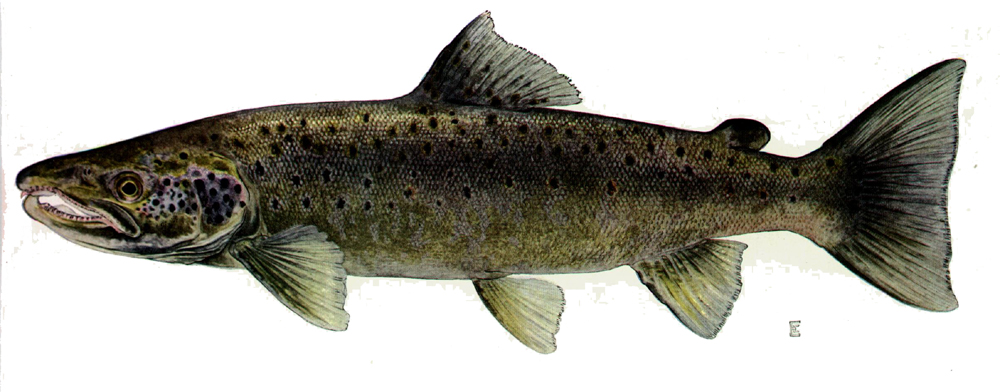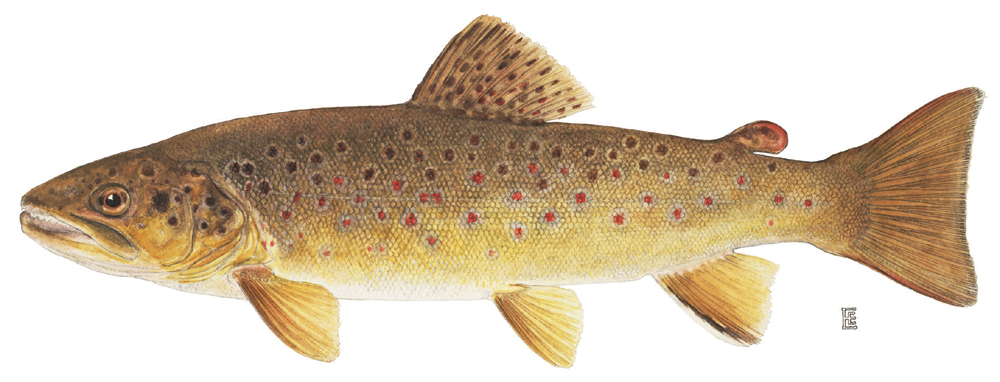Salmon Family
Salmonidae
Salmon and Trout Subfamily
Salmoninae
Each kind of salmon and trout (salmonid) in New York is currently managed with specific regulations on size, creel limits, and seasons. Management policies require anglers to identify their catch correctly to apply the proper regulations. Two problems in correct identification frequently arise: (1) many anglers and naturalists use common names for salmonids that differ from those used in fishing regulations; and (2) some anglers, especially beginners, are not familiar with techniques used to differentiate among these sport fishes. Misidentification of fish prevents proper interpretation of fishing regulations and may cause unintentional violations of fish and wildlife laws, upsetting the best management efforts.
Salmonids have fins with soft rays, except the adipose fin--a small, fatty fin located between the dorsal and tails fins--which has not rays. Fins of salmonids lack the stiff spines found on fins of some other fishes, such as sunfish and yellow perch. The dorsal fin is located about midway on the back. The tail varies from being deeply forked on some fish to nearly squared on others.
In summary, salmon and trout are smooth-scaled fish that have: (1) an adipose fin; (2) a large mouth with the jaw extending back beyond the eye; and (3) soft-rayed fins.
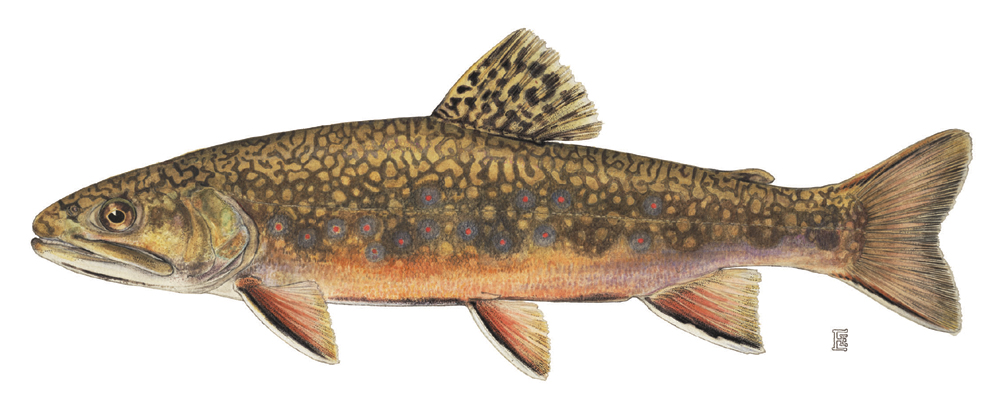 Brook
Trout (Salvelinus fontinalis)
Brook
Trout (Salvelinus fontinalis)
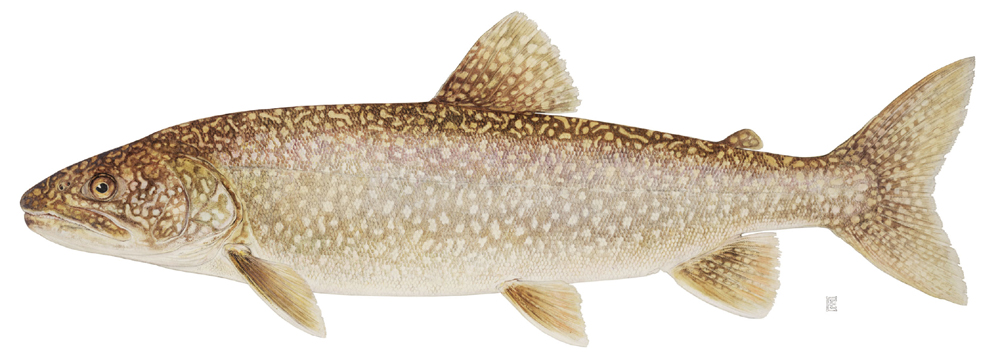 Lake
Trout (Salvelinus namaycush)
Lake
Trout (Salvelinus namaycush)
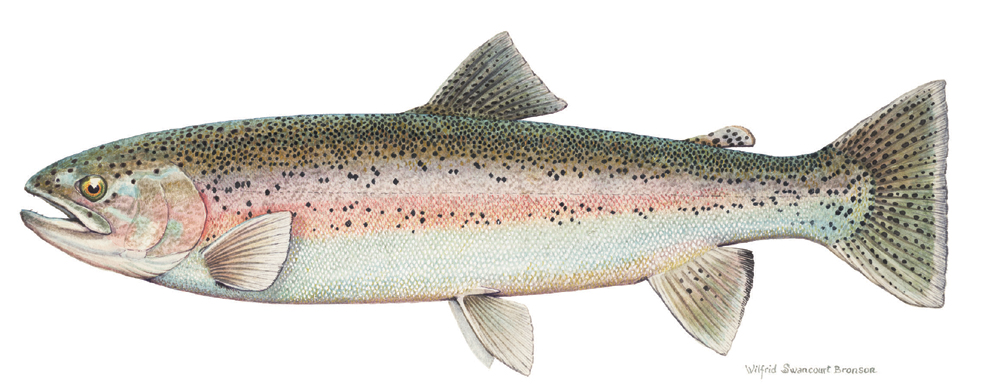 Rainbow
Trout or Steelhead (Oncorhynchus mykiss)
Rainbow
Trout or Steelhead (Oncorhynchus mykiss)
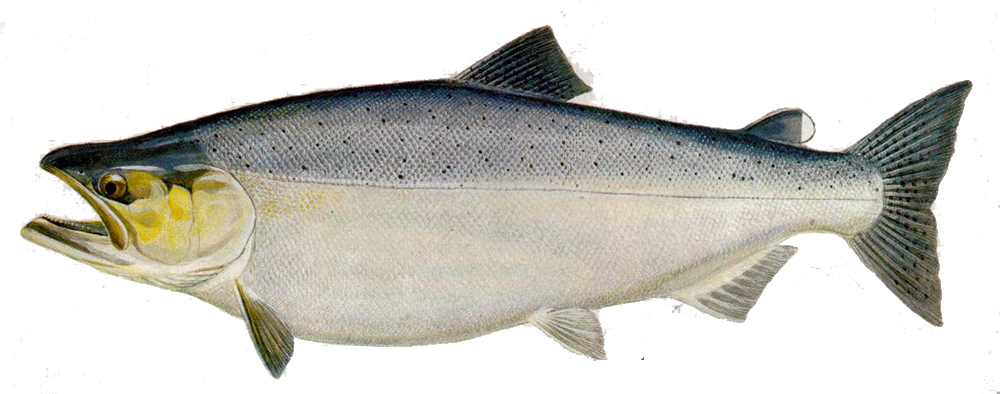 Chinook Salmon (Oncorhynchus tshawytscha)
Chinook Salmon (Oncorhynchus tshawytscha)
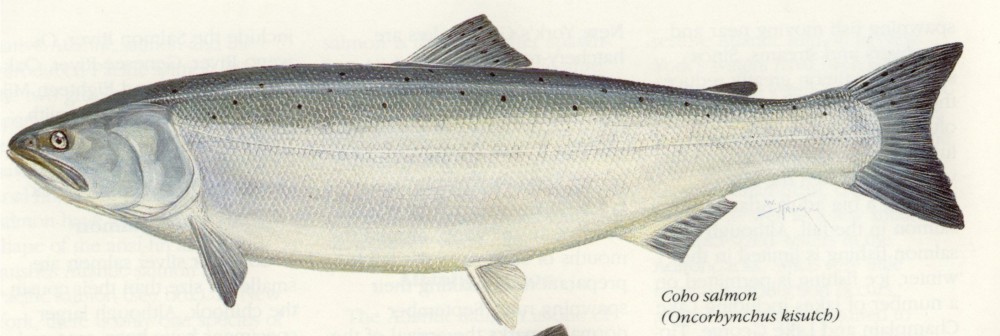 Coho Salmon (Oncorhynchus kisutch)
Coho Salmon (Oncorhynchus kisutch)
Coregoninae
Whitefishes technically are members of the salmon family, although their small mouth and weak teeth separate them from the salmon and trout. They are important in many waters as food for various other game fish, and lake whitefish are valuable commercial fish. Round whitefish are endangered in New York.
 Cisco
or Lake Herring (Coregonus artedii)
Cisco
or Lake Herring (Coregonus artedii)
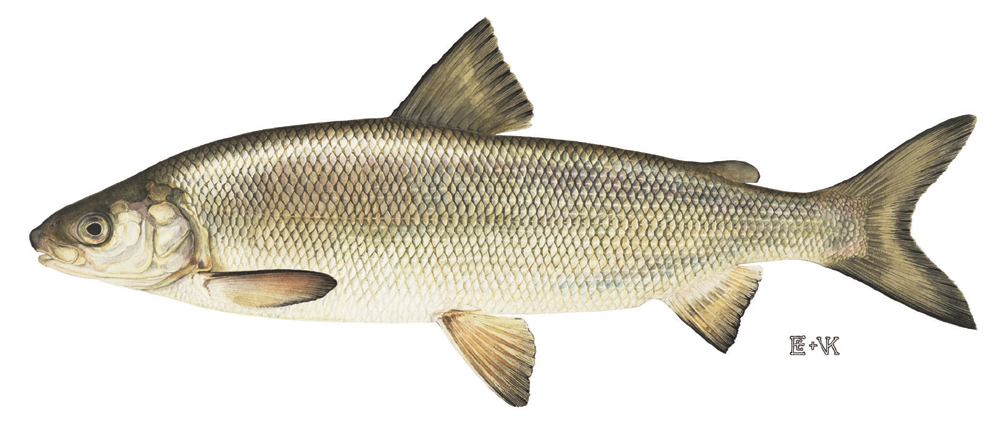 Lake
Whitefish (Coregonus clupeaformis)
Lake
Whitefish (Coregonus clupeaformis)
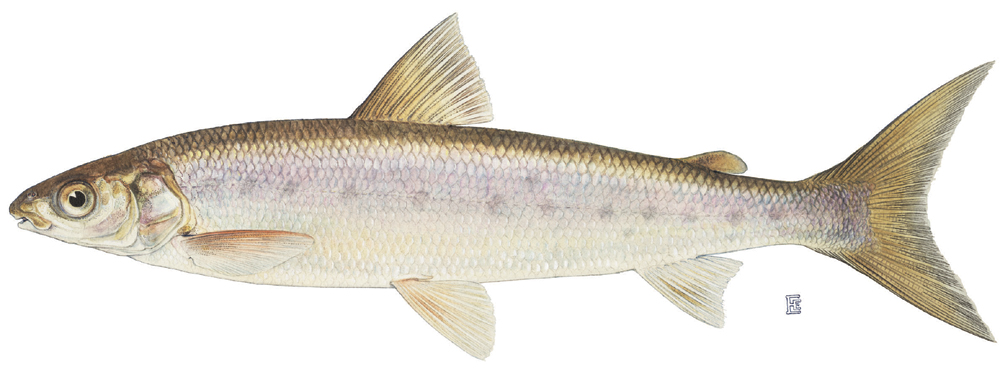 Round
Whitefish (Coregonus cylindraceum)
Round
Whitefish (Coregonus cylindraceum)
